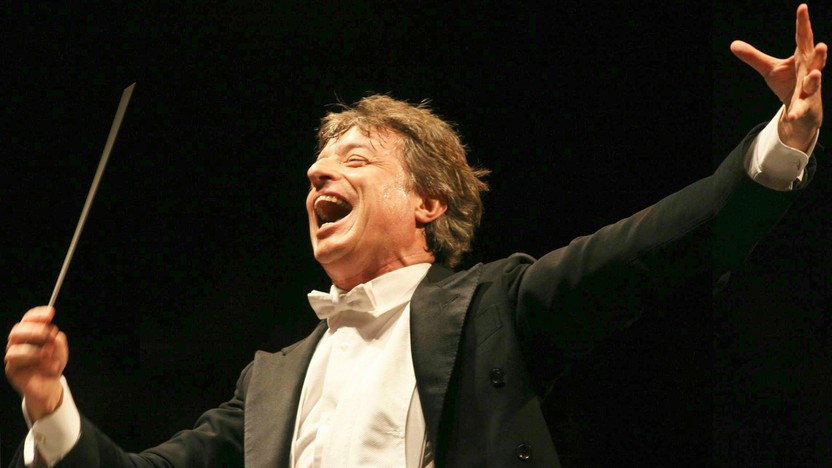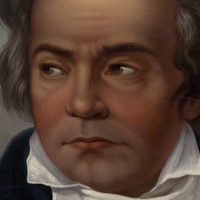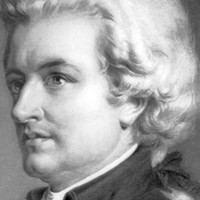Mozart's Prague Symphony

Sponsored By
- April 23, 2015

- April 24, 2015

- April 25, 2015


Sponsored By



The composer has provided the following program note:
Time and Again for Chamber Orchestra, commissioned by The Saint Paul Chamber Orchestra, is my third piece to be honored with a premiere by this orchestra, the first two being Waves in 1989 and Spirals in 2007. Its instrumentation, like that of a typical Beethoven symphony, is for double woodwinds, two horns and two trumpets, timpani, and strings. When writing for orchestra, I prefer the transparency of the Classical ensemble to the extravagant forces of the late Romantic period.
Time and Again is in one movement lasting about fifteen minutes. Its title reflects my preoccupation with musical time—pushing it forward, disrupting it, moving it in multiple speeds simultaneously, and bringing it to closure. Above all, the title refers to my proclivity to circle back through musical material in increasingly complex ways, so that time both repeats and accumulates. Time and Again passes through three such cycles, each comprised of musical ideas that seem heterogeneous but possess underlying similarities.
Time and Again has a twin, the violin-cello duo Give and Take. The two works were composed at the same time and cover the same musical course despite contrasting sound worlds and textures. One piece is the ink drawing, the other the oil painting.
Fred Lerdahl ©2014

Ludwig van Beethoven wrote most of the Third Piano Concerto in 1800, in advance of a major debut concert in Vienna, but he chose to play an earlier concerto instead. After a few more years of tinkering, he unveiled the new concerto on an 1803 program that also included the premiere of the Second Symphony. For the concerto, Beethoven performed off a hastily written score that, in the words of his page turner, contained “almost nothing but empty leaves; at the most, on one page or another a few Egyptian hieroglyphs wholly unintelligible to me were scribbled down to serve as clues for him.”
The concerto opens with a definitive statement from the strings countered by a questioning response from the winds. In line with the style that would come to dominate Beethoven’s “middle” period, these themes separate into essential fragments to be examined from all angles, with various rising triads, falling scales, and timpani-like alternations appearing in the foreground and background.
The first E-major chord of the central Largo could hardly be more alien, or more luminous. The movement continues as a study in contradictions: humble yet ornate, foreign yet familiar, slow yet restless. A striking exchange occurs when the flute and bassoon trade childlike melodies over a simple plucked background, while the piano issues gusts of sound blurred by the sustain pedal.
The finale returns to the home key with a theme that lands heavily on an unresolved A-flat: the very same pitch that, in a different guise, defined the bright harmonies of the slow movement. (On the piano, A-flat is identical to G-sharp, the major third in the key of E.) Later in the movement, the same musical pun allows the slow movement’s key of E-major to return briefly to put a radiant new sheen on the finale’s main theme.
Aaron Grad ©2022
 Listen to Audio
Listen to Audio
First performance January 19, 1787 in Prague.
While in Prague in 1787 to attend a production of The Marriage of Figaro, Wolfgang Amadeus Mozart introduced his first new symphony in three years. He had wanted to visit London that season, and he may have begun the symphony in anticipation of such a trip, but the journey stalled when his father refused to provide childcare. The less ambitious trip to Prague proved valuable anyway, since Mozart secured the opera commission that would result in Don Giovanni. At a time when his star-power in Vienna was waning, Mozart soaked up the adoration he received in Prague, where he purportedly said, “My Praguers understand me.”
The “Prague” Symphony in D Major is one of only three Mozart symphonies with a slow introduction. Foreshadowing similar angst in Don Giovanni, the weighty opening broods over tense music in the key of D-minor. The fast body of the movement counters with a breathless energy akin to the overture from The Marriage of Figaro, with running sixteenth-notes and surprising dynamic contrasts.
The central Andante movement colors the first theme of its sonata form with vertiginous, rising chromatic scales. Later, the development section churns this material through a wide array of keys and moods. The symphony forgoes a minuet and proceeds directly to the finale, which quotes the portion of The Marriage of Figaro where Susanna tries to rush the love-struck page, Cherubino, out the window. It is a fitting sendoff for such a drama-filled symphony, and it must have delighted those Praguers who gobbled up Figaro and all things Mozart.
Aaron Grad ©2025
The winners of the 2015 SPCO Youth Chamber Music Competition, the Ampère String Quartet, will perform in the Marzitelli Foyer of the Ordway Center preceding the Friday, April 24 performance of Lise de la Salle Plays Beethoven. The members of the quartet are Samuel Richman (violin), Louisa Byron (violin), Paul Watkins (viola), and Eliot Johnson (cello). They will be performing the first movement of Ravel's String Quartet in F Major.
The annual competition is sponsored and coordinated by the Friends of the Saint Paul Chamber Orchestra, the volunteer organization that supports The SPCO through educational, social and fundraising activities. Partnering with them are MNSOTA, the Minnesota String and Orchestra Teachers Association, and MacPhail Center for Music. To learn more about the competition and to hear the rest of this year's winners, visit www.spco-ycmc.org.
Get driving directions and find nearby parking.
Find dining options close to the venue.
View seating charts to find out where you'll be seating.
SPCO concerts are made possible by audience contributions.
For exclusive discounts, behind-the-scenes info, and more:
Sign up for our email club!
